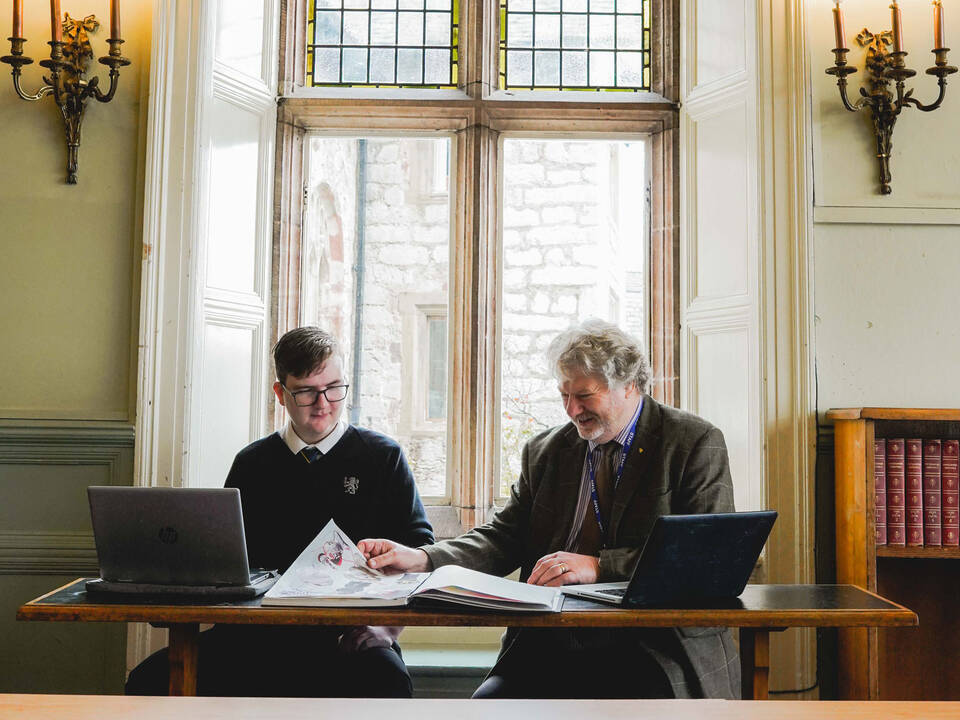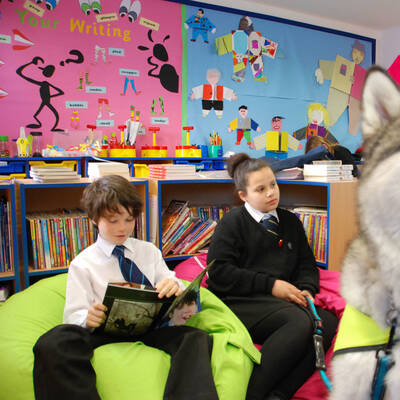

Dyslexia & weakness in literacy
Dyslexia is a learning difference which primarily affects reading and writing skills. This specific learning difference (SpLD) can also impact on other areas of learning.
These can include speed of processing (how quickly you make sense of things), short-term memory (information you’re currently thinking about or aware of), sequencing of information (the ability to arrange language, thoughts, information and actions in a certain order to get things done.), auditory perception (how you hear and act on information), visual perception (how you see and act on information), and organisational skills (deadlines, decisions, timetables, planning, homework).
Difficulties in these areas can affect learning and acquisition of literacy skills and cross-curricular progress. It is important that Dyslexia schools recognise the importance of enhanced teaching techniques. St. David's College is among the best schools for dyslexia, and we utilise multisensory teaching to engage different senses and facilitate learning. Multisensory teaching uses different senses:
- Auditory (hearing and speaking)
- Visual (seeing and being aware of)
- Kinaesthetic (touch and movement)
This multisensory approach to teaching enables the pupils to receive a comprehensive lesson that will fit in with all styles of learning.
At St David's College we have built an enviable reputation as one of the best schools for dyslexia in the UK and one of the best dyslexia boarding schools internationally. Pupils are encouraged at every opportunity to use assistive technology, specifically Learning Tools within Microsoft Office 365 OneNote Class notebook, Word and TEAMS. Within the OneNote pupils can use Immersive Reader to read aloud documents, this makes accessing the curriculum much easier as pupils are able to listen and follow the text as well as identifying key words. The dictation tool enables pupils to get their thoughts down, producing work at their own speed.
The technology that St David's uses as a Dyslexia School in Wales encourages pupils to take charge of their own work and work towards becoming independent learners.
It is important to minimize the volume of text used to deliver information to dyslexic pupils. Textbooks are available as PDFs meaning that their content can be read to pupils in Microsoft Edge or within Microsoft OneNote.
At school we reinforce and consolidate learning by revisiting topics and try to ensure that only 20% of a given lesson content is new information.
Information must be chunked into manageable amounts, and visual images used to support learning. Keywords will need ‘over-learning’ and introduced to the pupil before the lessons as well as during and after.
Key points to support your pupil:
- Praise, this will build self-esteem and encourage learning
- Don’t ask to read out loud, unless you know they are comfortable doing this
- If the pupil forgets things don’t tell them off or embarrass them – encourage them to use other ways of remembering, e.g. mobile phone as a reminder
- Never use the word LAZY it often takes the dyslexic learner longer to process information
- Give them extra time to finish tasks
- Use a computer to complete work
- Use coloured pens to highlight information
- Display notes with key information in various places around the home, they can then see them constantly as a revision and memory tool
- Mindmap ideas to help with planning
- Nessy and Workshark are fun online platforms that pupils can use to work on their literacy skills.
For the dyslexic pupil, the assistive technology embedded in Microsoft Office 365 encourages them to take charge of their own work and work towards becoming independent learners in control of their learning.
Useful information:
Books:
Cowling, H. & Cowling, K. (1993) Toe by Toe: A highly Structured Multi-Sensory Reading Manual for Teachers & Parents. West Yorkshire: K & H Cowling
Moody, S. (2004) Dyslexia: A Teenager’s Guide. UK: Vermillion, Ebury Publishing
Snowling, M. J. (2019) Dyslexia: A Very Short Introduction. Oxford: Oxford University Press
Websites:
What is dyslexia? www.bdadyslexia.org.uk/dyslexia/about-dyslexia/what-is-dyslexia
How I can support my child? www.bdadyslexia.org.uk/advice/children/how-can-i-support-my-child
Neil Mackay: Dyslexia Friendly strategies www.actiondyslexia.co.uk






